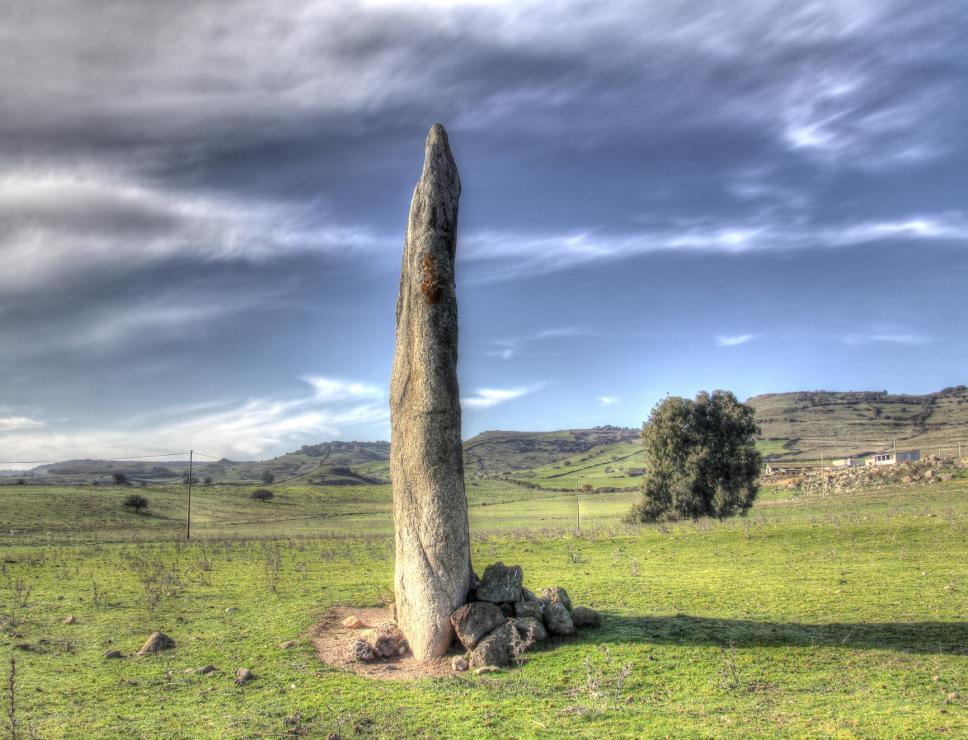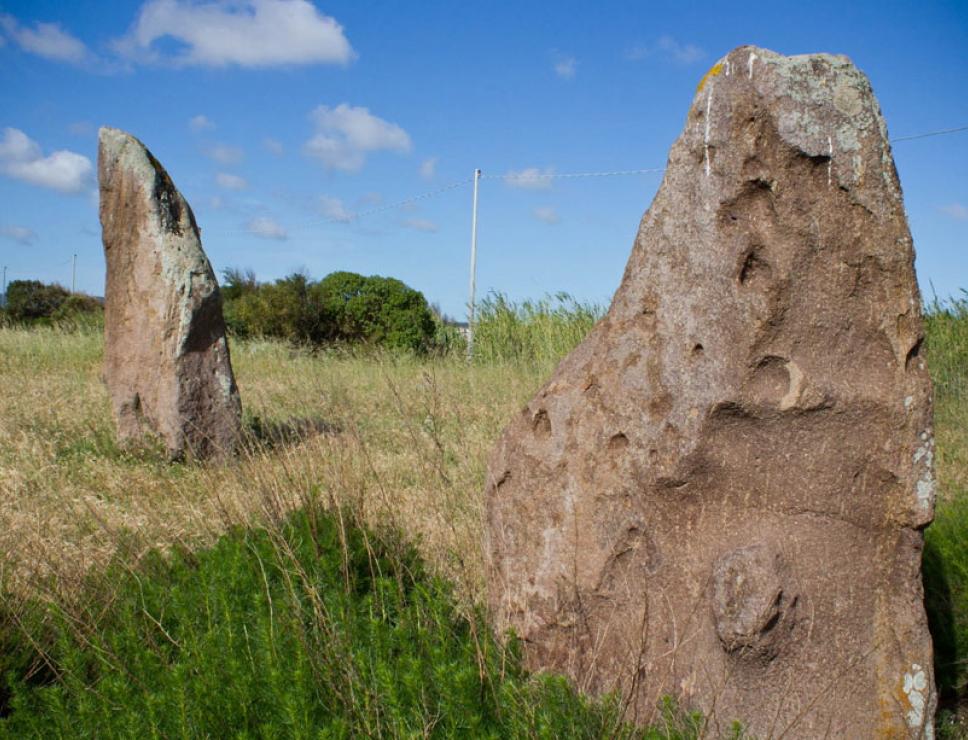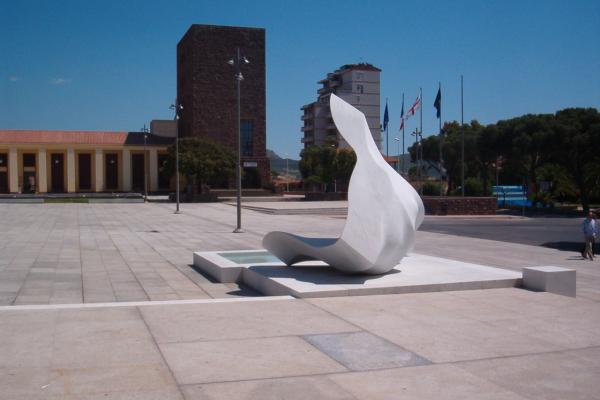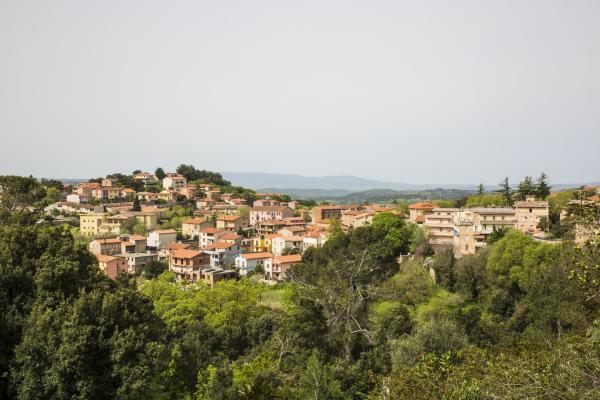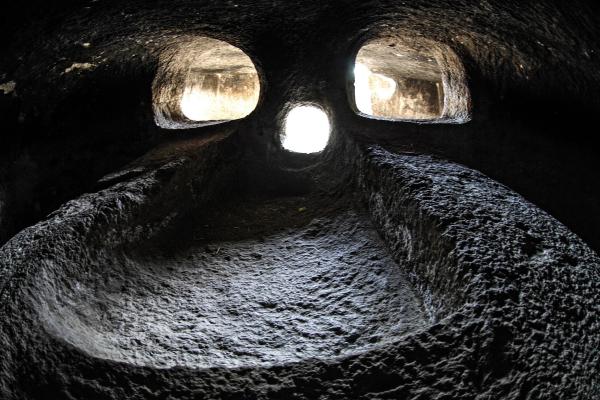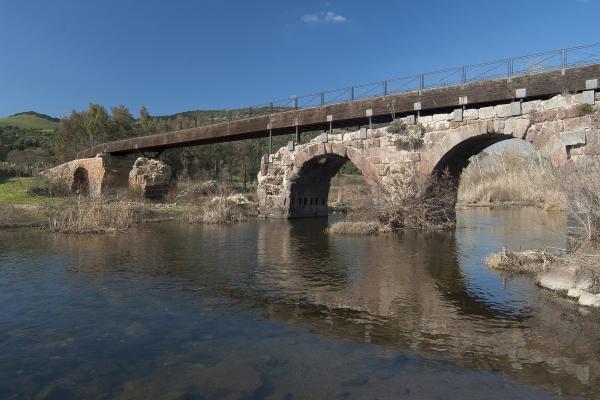
Places shrouded in legends and mystery, an ancestral world that speaks through huge stones. This is the atmosphere you will experience at Pranu Mutteddu in Goni and Bir'e Concas in Sorgono, in the green heart of the island, where there are hundreds of menhirs: solitary, in pairs, in a circle or in long rows symbolising ritual pathways, perhaps oriented based on celestial phenomena. Magic, sacredness and magnetic power, as in the famous Stonehenge, but here the menhirs are older and greater in number.
Plunged 'like a knife' into the ground, the perdas fittas (or 'driven stones' in Sardinian) rise up towards the sky surrounded by a fairytale landscape: centuries-old oak woods, meadows of cyclamen and wild orchids, lavender and myrtle bushes that perfume the air. The sky also plays its part, the sun filtering through the lush nature and making the huge, elongated, tapered stones glow with a soft light. They are refuges of the soul, sensory places that spark the imagination: is it all real or is it a fairy tale told by nature?
From the depths of the ground to the earthly world, and then stretched towards heaven. The menhirs are a gateway to the divine. In the beginning, five thousand years ago, they were shaped only by wind and water, then they were carved and sculpted, taking on increasingly human-like forms, probably to celebrate the ancestors. To propitiate the gods for conception or childbirth, for the fertility of the fields or during the passage to the afterlife, they were touched with the hands and belly, sprinkled with liquids and adorned with votive offerings. Their sacredness has lasted over the millennia, a bond with archaic roots that was not well received by the Church, so much so that Pope Gregory the Great, at the end of the sixth century, described the Sardinians as 'worshippers of logs and stones'. Other popes decreed the demolition of the menhirs. So did some kings, including Charlemagne. Despite their demonisation, not all has been lost. About a thousand menhirs are still standing, scattered around the island. After five millennia, they are still sacred: up until the beginning of the 20th century, devotees stopped to pray there. Since then many perdas fittas have taken on the names of saints.
You will also find them near the sea: in Cuili 'e Piras, in the Castiadas countryside, there are over 50. A few dozen kilometers from Oristano is the 'valley of the menhirs' of Villa Sant'Antonio, where the island’s tallest, su Corru Tundu, stands. You will come across many lone menhirs along hiking trails and on roadsides, still standing at ancient crossroads and along transhumance routes, guardians of the cycles of nature and earthly events. You will see others guarding tombs: they are often engraved with spirals, concentric circles, human figures and small hollows, the 'coppelle', coded languages that are well known in Sardinian prehistory. Signs engraved deep into the stone, like those on the Boeli stele, known as sa Perda Pintà, a large granite statue-menhir finely decorated with patterns and engravings that is beautifully displayed at the entrance to Mamoiada.
Over time, some have lost their sacred aura to become irreverent stones. At Sant'Antioco stands a pair of menhirs, su Para 'e sa Mongia, the monk and the nun, who, according to legend, were punished by divine wrath when they eloped. At Villaperuccio, near the necropolis of Montessu, stands the menhir dedicated to Luxia Arrabiosa, a beautiful jana, part fairy and part witch, who lives in popular tales. Traces of the legendary Luxia can also be found on the Prabanta hill, next to Mount Arci: in the Simala area there is a pair of menhirs sa Turra 'e sa Cullera (ladle and spoon) named after her; in the Morgongiori area, near a domus de Janas, stands the menhir su Furconi de Luxia Arrabiosa. It has been stuck and petrified there ever since the beautiful Lucia, pursued by a faun who was in love with her and never reciprocated, struck him to death with a poker to escape his ambush.
At Allai, Ruinas and, above all, Laconi, visitors will be able to admire the most advanced menhirs, sculpted with stylised human figures: noses and eyebrows, anatomical details, clothing and weapons. Two superimposed figures were usually engraved on the surface, 'the inverted one', the spirit of the deceased, which also appears in the rock tombs of sas Concas in Oniferi, and the 'two-pronged dagger', similar to the Egyptian hieroglyphics reproducing the uterus, proving the influence of the more evolved civilisations overlooking the Mediterranean and Sardinian pre-Nuragic peoples. Together the carvings would represent the soul of man returning to the earth through his mother. Laconi is also home to the Menhir museum, which houses 40 extraordinary works of art from the Copper Age, at the end of the 3rd millennium BC.




